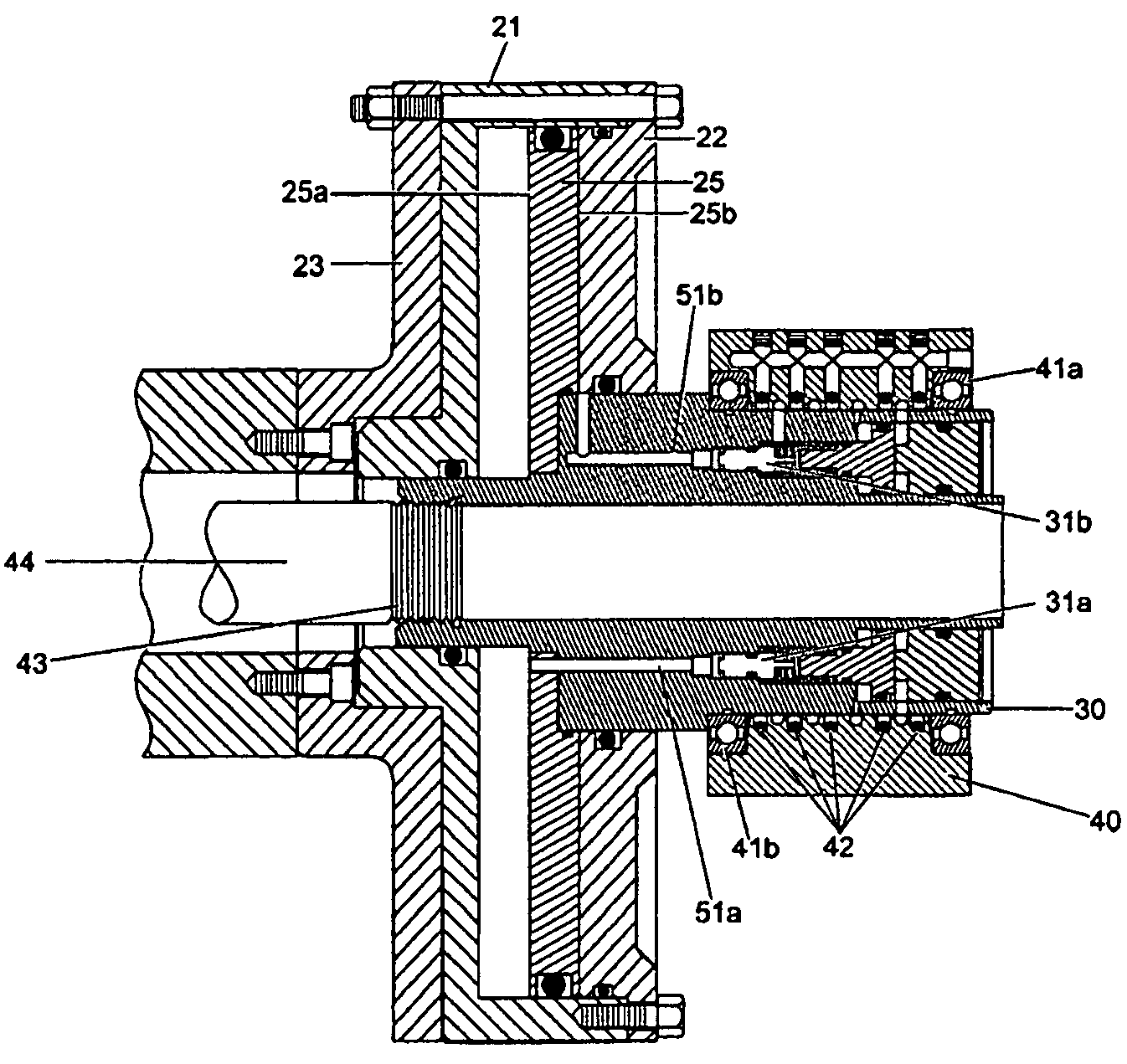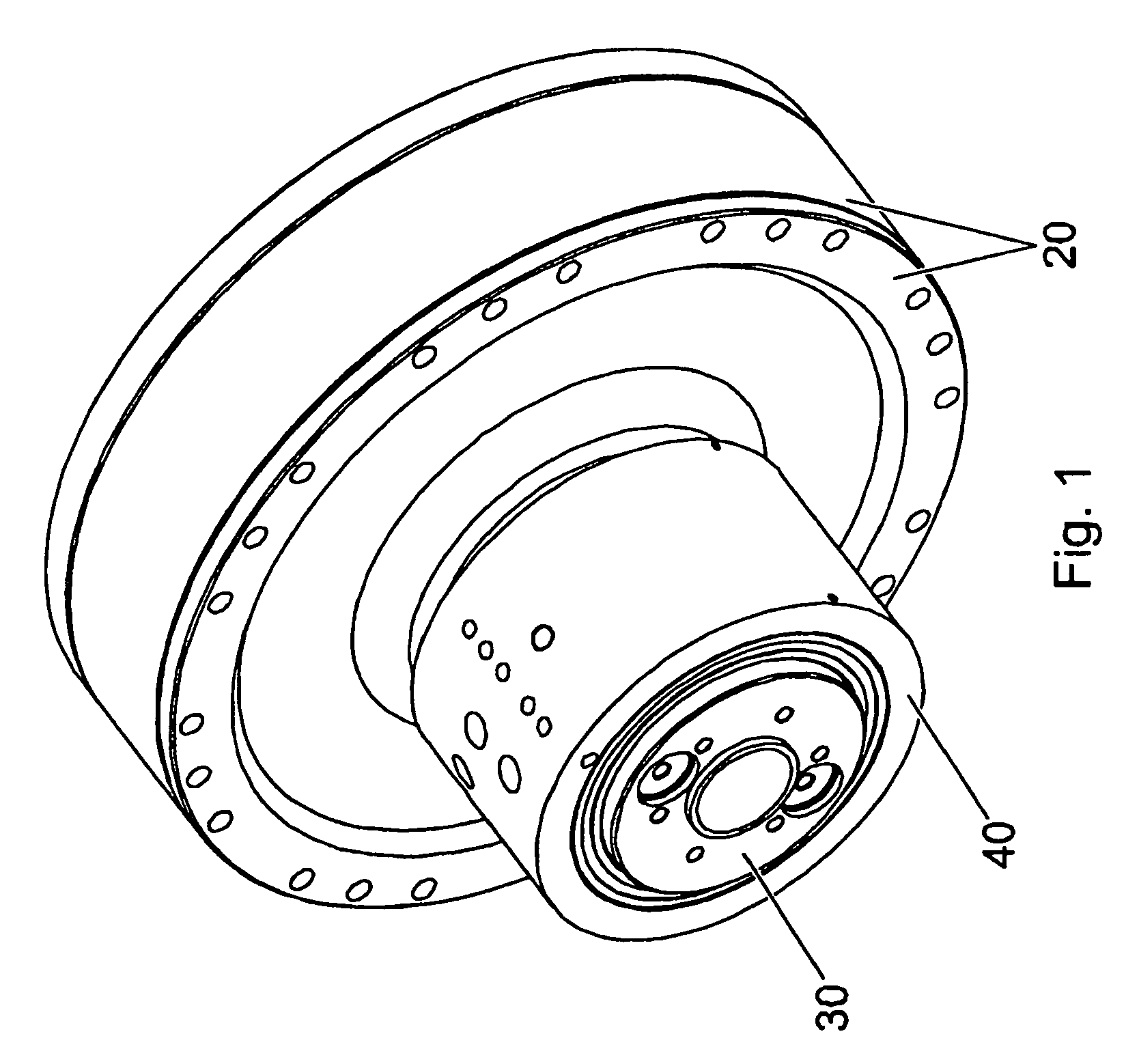Linear actuator for rotating shaft assemblies
a technology of rotating shaft and actuator, which is applied in the direction of mechanical equipment, machines/engines, manufacturing tools, etc., can solve the problems of many mechanical systems that cannot be adapted for use with rotating shaft assemblies, can not meet the requirements of linear actuator design and operation, and the system which can be adapted for rotating shaft assemblies is typically overly complex and expensive, so as to reduce the associated thermal distortion, reduce the effect of heat build-up and reduce the effect of thermal distortion
- Summary
- Abstract
- Description
- Claims
- Application Information
AI Technical Summary
Benefits of technology
Problems solved by technology
Method used
Image
Examples
Embodiment Construction
[0021]The detailed description of the invention set forth below in connection with the associated drawings is intended as a description of various embodiments of the invention and is not intended to represent the only embodiments in which the invention may be practiced. The detailed description includes specific details for the purpose of providing a thorough understanding of the invention. However, it will be apparent to those skilled in the art that the invention may be practiced without all of the specific details contained herein. In some instances, well known structures and components are described more generally in order to avoid obscuring the concepts of the invention.
[0022]FIG. 1 is an isometric view of a linear actuator 10 according to one embodiment of the invention. As depicted in FIG. 1, linear actuator 10 includes a cylinder member 20, a rotatable shaft 30 and a pressure delivery body 40. Briefly, cylinder member 20 defines a cavity in which a primary piston (not shown)...
PUM
| Property | Measurement | Unit |
|---|---|---|
| pressure | aaaaa | aaaaa |
| force | aaaaa | aaaaa |
| pressure loss | aaaaa | aaaaa |
Abstract
Description
Claims
Application Information
 Login to View More
Login to View More - R&D
- Intellectual Property
- Life Sciences
- Materials
- Tech Scout
- Unparalleled Data Quality
- Higher Quality Content
- 60% Fewer Hallucinations
Browse by: Latest US Patents, China's latest patents, Technical Efficacy Thesaurus, Application Domain, Technology Topic, Popular Technical Reports.
© 2025 PatSnap. All rights reserved.Legal|Privacy policy|Modern Slavery Act Transparency Statement|Sitemap|About US| Contact US: help@patsnap.com



